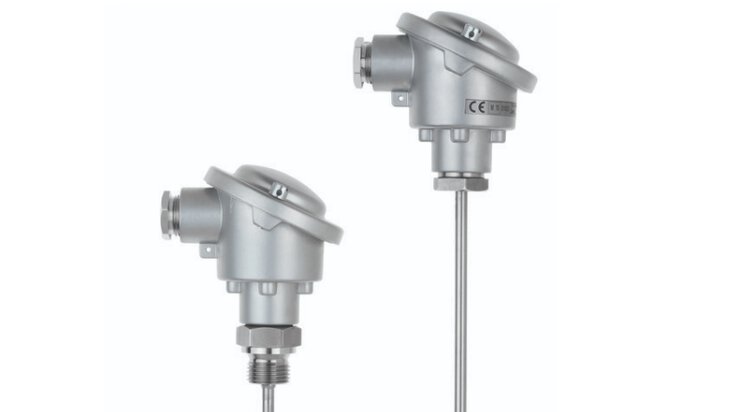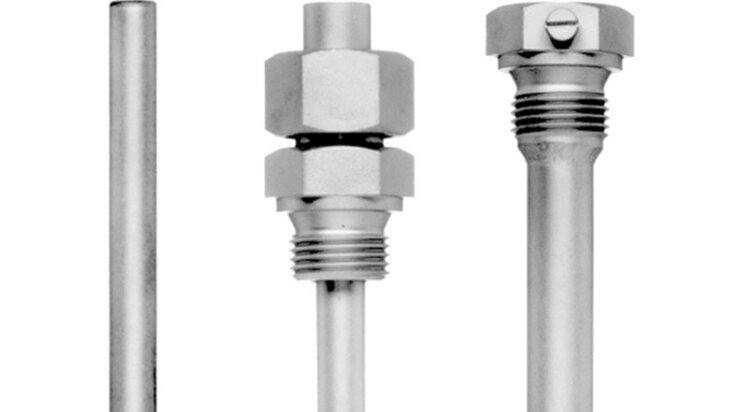

Thermowell – how to choose the best one for your application?
Thermowells, although inconspicuous, are an essential companion to temperature sensors in most industrial applications. What are the types of immersion sleeves? What are the benefits of their use? How to choose the right sheath for the application? At what depth to place the cover? Read the following post and find out the answers!
What is thermowell?
Thermowells are usually sleeves, closed at one end, inserted into a pipeline or tank, which are immersed in a medium - liquid or gas. Thermowell protects the sensor from the destructive properties of the medium, stabilize the sensor, and allow replacement of sensing element or calibration without having to stop the process, for example, emptying the tank.
Advantages of thermowells for temperature sensors
In summary, the advantages of immersion sleeves are:
-
increase the life of the measuring insert by protecting it from the effects of harsh process environment conditions such as high pressure, high-velocity flow, high temperature and corrosive process media. It acts as a barrier between sensor and process medium
-
the ability to replace the measuring insert or calibration without stopping the process
-
the sensor can be removed from the sheath easily and quickly without disassembly
-
mechanical stability against pressure and flow
-
no leakage of the medium when the sensor is pulled out
Thermowell types
Protection tubes are used for various types of temperature sensors, including resistance temperature sensors, dial thermometers, thermocouples and thermostats. They are classified according to criteria such as:
Process connection
-
thermowells with flange connection

Welding protective sleeves
Thermowell material
Thermowells are most often made of stainless steel. We also distinguish immersion sleeves made of such materials as:
-
carbon steel - for oxidizing environments of temperatures up to +700°C
-
inconel alloy, having greater resistance to corrosion at high temperatures
-
monel alloy resistant to seawater
-
nickel for oxidizing and sulfur-free atmospheres
-
tantalum - resistant to corrosion caused by chemicals
Application
We can also classify protection tubes of temperature sensors by application, such as:
-
hygienic thermowells - dedicated for food and pharmaceutical industries
-
ATEX thermowells - for explosion hazardous areas
Thermowell design
-
one-piece casing
-
multipart shield

Threaded thermowell
Immersion sleeve of the temperature sensor – depth of immersion
Thermowells are typically installed in piping systems. The thermowell should reach the place where the flow on the turbulent (turbulent) character, and the temperature reaches a representative value. The depth of the disturbance depends on the type of medium:
-
gases - depth = 10x the diameter of the sleeve
-
liquids - depth = 5x the diameter of the casing
For pipelines with a small cross section, sometimes it is not possible to maintain these distances. Then we recommend inserting the immersion casing through the opening at the bend of the channel, with the tip in the direction of the inflow of the medium.
Consequences of placing thermowells at an inadequate depth
Depth of immersion is an important aspect, as a sleeve placed too shallow will cause effects of temperature measurement to be falsified due to proximity to the duct walls - they will be inflated if there is a heat source close by, or lowered if the temperature outside the pipeline is lower than the temperature of the medium. Placing the shield too deep will increase the response time of the temperature sensor.

The depth of immersion of the thermowell affects the accuracy of the measurement
- ${title}${badge}

